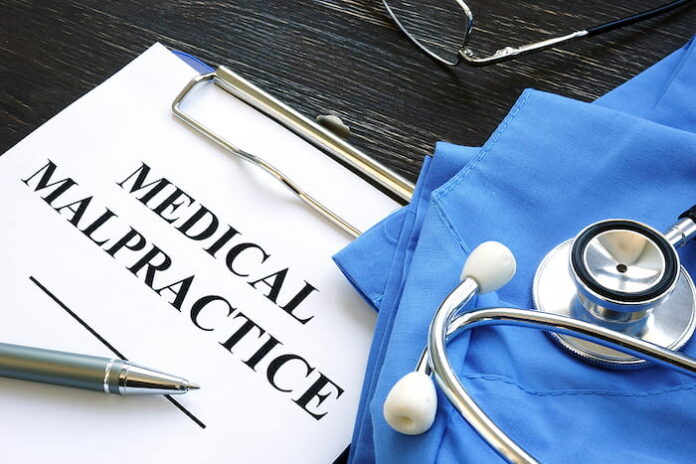Medical malpractice is a complex and sensitive issue that arises when healthcare providers fail to meet the accepted standard of care, resulting in harm to patients. In this article, we delve into the intricacies of medical malpractice, shedding light on the key components, challenges, and the pursuit of justice for those affected.
Defining Medical Malpractice
Medical malpractice refers to the negligence or deviation from the standard of care by healthcare professionals that leads to patient harm. This deviation can occur in various forms, including misdiagnosis, surgical errors, medication mistakes, failure to provide informed consent, and inadequate treatment.
Components of Medical Malpractice
Certain components must be present to substantiate a medical malpractice claim:
1- Duty of Care: The healthcare provider is obligated to owe a duty of care to the patient, establishing a professional relationship that implies a responsibility to provide competent and reasonable care.
2- Breach of Duty: Evidence must be present to showcase a breach in the standard of care. This involves demonstrating that the healthcare provider deviated from the actions that a reasonable and competent professional would undertake in similar circumstances.
3- Causation: It is imperative to establish a direct link between the breach of duty and the harm suffered by the patient. Demonstrating a causal connection is pivotal in proving medical malpractice.
4- Damages: Measurable damages must have been suffered by the patient, encompassing physical injuries, emotional distress, additional medical expenses, or loss of income. These damages serve as tangible evidence of the repercussions resulting from the alleged malpractice.
Challenges in Medical Malpractice Cases
Medical malpractice cases are notoriously complex, presenting challenges for both plaintiffs and defendants. Key challenges include:
1- Expert Testimony: Medical malpractice cases often require experts to show the standard of care and prove deviation. Finding qualified experts willing to testify can be challenging.
2- Causation Issues: Connecting the healthcare provider’s actions directly to the patient’s harm can be complex, especially when dealing with pre-existing conditions or multiple healthcare providers.
3- Statute of Limitations: Each state has a statute of limitations, limiting the time within which a medical malpractice lawsuit can be filed. You might need to know about the Michigan medical malpractice statute of limitations, for instance. Failing to file within this timeframe can bar the victim from seeking compensation.
4- Medical Records Complexity: Understanding and interpreting medical records requires expertise. Both legal and medical professionals must collaborate to navigate the intricate details of a patient’s medical history.
The Pursuit of Justice
For victims of medical malpractice, seeking justice involves navigating a legal system designed to ensure accountability and compensation. It often begins with consulting a medical malpractice attorney who can assess the case’s viability, gather evidence, and guide the victim through the legal process.
The Role of Medical Malpractice Attorneys
Medical malpractice attorneys play a crucial role in advocating for victims. Their responsibilities include:
1- Case Evaluation: Assessing the viability of a case by examining the medical records, consulting with experts, and understanding the circumstances surrounding the alleged malpractice.
2- Expert Consultation: Collaborating with medical experts to establish the standard of care, demonstrate deviation, and establish a causal link between negligence and harm.
3- Negotiation and Settlement: Attempting to negotiate a fair settlement to avoid a lengthy and costly trial.
4- Litigation: Filing a lawsuit and representing the victim in court if a fair settlement cannot be reached. This involves presenting evidence, cross-examining witnesses, and making legal arguments to establish liability.
Conclusion
Medical malpractice cases are complex, requiring a thorough understanding of medical and legal intricacies. Victims of medical malpractice deserve justice, and holding healthcare providers accountable for negligence is crucial for improving patient safety and maintaining the integrity of the healthcare system.
Did you find this helpful? Check out our other helpful articles on our website.
Read Also
- Creative Approaches to Alleviating Healthcare Staff ShortagesHospitals and clinics are facing staff shortages, which makes it harder to take care of patients well. Finding simple and useful solutions is very important. Easy changes like flexible work hours, good training, and chances to grow can help staff stay happy. Technology, like online doctor visits and helpful tools, can make work easier. Smart… Read more: Creative Approaches to Alleviating Healthcare Staff Shortages
- Understanding the Role of Sterilizers in Healthcare FacilitiesHave you ever wondered how hospitals keep their equipment safe enough to use on dozens of patients every day? Most people never think about what happens behind the scenes, yet these hidden steps play a huge role in patient safety. Sterilizers are part of that system, working quietly to remove harmful germs before any instrument… Read more: Understanding the Role of Sterilizers in Healthcare Facilities
- Building Healthcare Access Where It’s Needed Most: A Local First ApproachHealthcare shouldn’t depend on where you live. But in the U.S., it often does. If you’re in a big city, you likely have options. If you’re in a small town or an underserved neighbourhood, it’s a different story. To fix this, more healthcare leaders are turning to a local-first approach. That means putting clinics and… Read more: Building Healthcare Access Where It’s Needed Most: A Local First Approach
- Revolutionizing Patient Engagement: Innovative Solutions for Improved Care and Treatment SuccessNavigating healthcare system can often feel overwhelming for patients. Between appointments, prescriptions, and treatment regimens, it’s easy for crucial details to get lost in the shuffle. That’s why effective patient engagement and support solutions are more important than ever. Companies like Serva Health, with their pharma hub services, are stepping up to ensure that patients… Read more: Revolutionizing Patient Engagement: Innovative Solutions for Improved Care and Treatment Success
- On-Demand Healthcare Staffing As A Cost-Saving StrategyThis is an exciting and challenging time for the healthcare industry. Technology is advancing almost faster than humans can keep pace. New legislation is creating fresh challenges for the future of healthcare, and the shifting population demographic continues to place more pressure on healthcare facilities. Amidst these changes, healthcare facilities are facing a critical staffing… Read more: On-Demand Healthcare Staffing As A Cost-Saving Strategy
- The Benefits of Contract Labor Staffing in HealthcareThe most successful healthcare facilities today aren’t just reacting to crises—they are building workforce resilience to withstand them. Unpredictable patient demand, coupled with persistent nursing shortages, has made the traditional staffing model obsolete. Relying on mandatory overtime to cover a sudden surge in capacity is a recipe for high turnover and rising employee burnout relief… Read more: The Benefits of Contract Labor Staffing in Healthcare
- Management Reinforcement for Healthcare Providers in a Shifting SystemHealthcare is changing faster than ever. So, providers are feeling the pressure to keep up. New technology, changing patient needs, and constant rule updates make it tough for managers to stay on top. Strong leadership helps teams work better, give great care, and stay happy in their jobs. Here’s how healthcare leaders can strengthen their… Read more: Management Reinforcement for Healthcare Providers in a Shifting System
- Why Effective Disinfection Remains the Foundation of Public HealthFrom hospitals and schools to transport hubs and food production sites, disinfection is central to breaking the chain of infection and protecting community health. The COVID-19 pandemic highlighted how crucial surface hygiene and environmental control are in reducing the spread of harmful microorganisms. Yet, beyond emergency response, routine and validated disinfection practices remain the cornerstone… Read more: Why Effective Disinfection Remains the Foundation of Public Health









